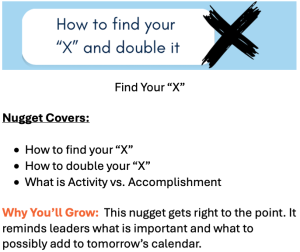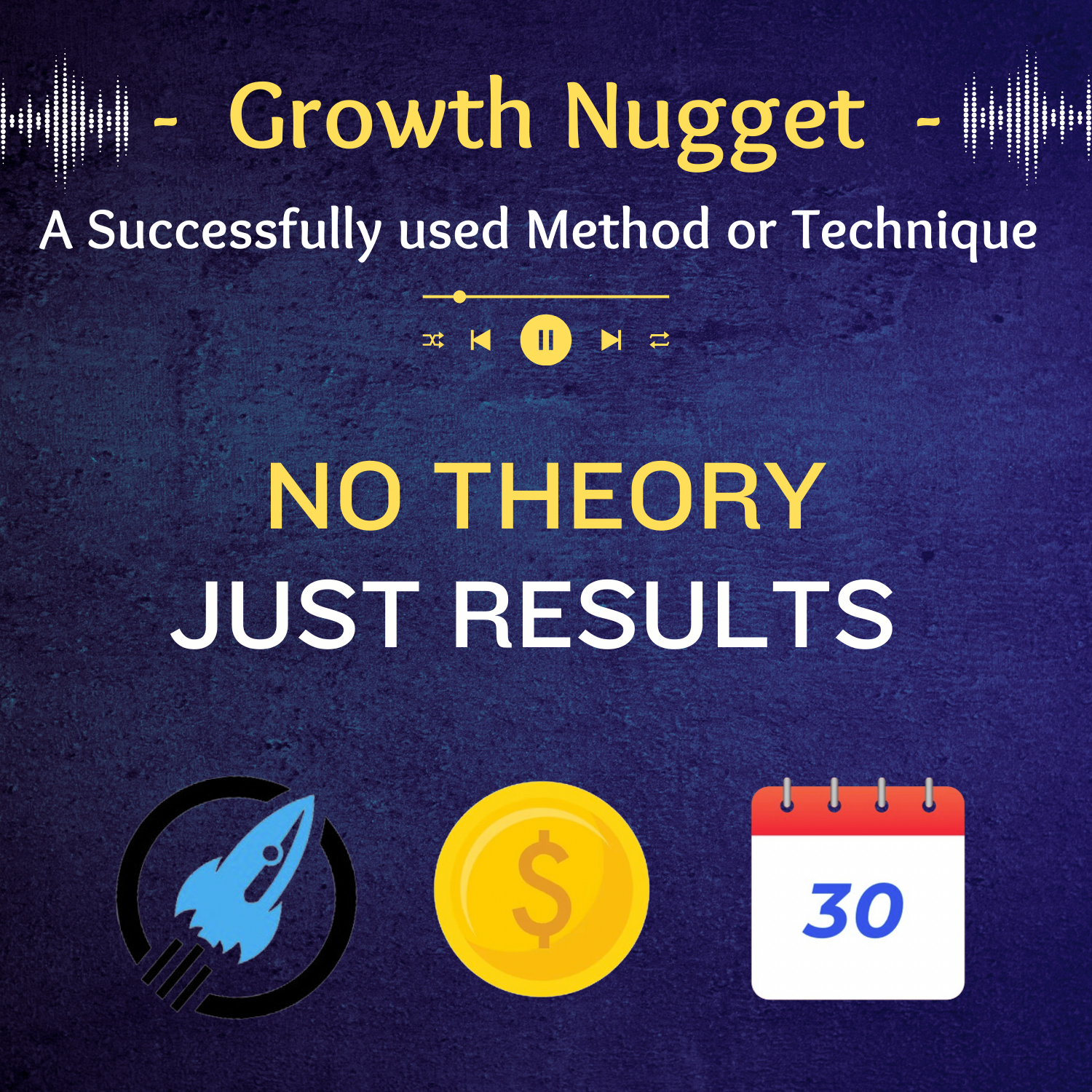Doubling X
$23.00
(0:00 – 1:11)
I find one of the biggest mistakes when mentoring salespeople is, well let me back up, typically if I’m gonna sit down with someone and they want to increase sales, whether it’s the CEO of a company, the sales manager, an individual sales rep, usually within two to five minutes the person in front of me, all they want to talk about is sales. And I mean numerically, they want to talk about how many they’ve done, the dollars per sale, and I usually spend a good amount of time trying to steer the ship away from sales to find out what’s causing the sales. And they get uncomfortable, they don’t want to take the time because they know, you know, this may be a one-hour phone call, four-hour phone call, or a whole day, they want to get right to it.
And I’m just gonna say it this way, the biggest mistake that I see, unequivocally in 20 plus years, is people count sales. We don’t count sales here. In 20 some years, nobody’s ever had a meeting in my company where we’ve counted sales.
We count presentations since 1996. We count the amount of presentations. It is our belief, and I think we have the physical evidence, that if you count the presentations, the sales happen.
(1:12 – 1:56)
If you count the presentations and you don’t count the sales, the pressure gets relieved from the salespeople. When you count sales, all of the pressure is on the sale. When you count the presentations, the pressure is on the presentations.
Now, for those of you listening to this, maybe you have an Amazon website that sells shoes, and you don’t make presentations. Oh, really? Really? Let’s keep going. So, here’s what I’d like you to do.
I want you to go back six months, and I want you to find a way to track how many presentations you or your company have done. And when you get this eerie, icky feeling, you’re like, well, how in the world am I going to do that? Well, it can be done. It will be done.
(1:57 – 3:01)
You have to do it. You have to go back step by step, and let’s just deal with salespeople. Well, if your salespeople don’t have a date timer or a calendar that shows them how many presentations and how many meetings they have, I would ask you to, number one, remove the salesperson if they don’t track that.
Now, I’m not being facetious. Number two, remove yourself from the equation because you cannot expect what you don’t inspect. And again, I’m being somewhat sarcastic.
So, in a salesperson model, it’s a little bit easier because you can open up a calendar and see how many presentations. But let’s take the person that sells shoes on Amazon. Well, how many presentations were made? Well, number one, you can get the data that shows how many times that product or page were viewed, and guess what? That is a presentation.

(0:00 – 1:11)
I find one of the biggest mistakes when mentoring salespeople is, well let me back up, typically if I’m gonna sit down with someone and they want to increase sales, whether it’s the CEO of a company, the sales manager, an individual sales rep, usually within two to five minutes the person in front of me, all they want to talk about is sales. And I mean numerically, they want to talk about how many they’ve done, the dollars per sale, and I usually spend a good amount of time trying to steer the ship away from sales to find out what’s causing the sales. And they get uncomfortable, they don’t want to take the time because they know, you know, this may be a one-hour phone call, four-hour phone call, or a whole day, they want to get right to it.
And I’m just gonna say it this way, the biggest mistake that I see, unequivocally in 20 plus years, is people count sales. We don’t count sales here. In 20 some years, nobody’s ever had a meeting in my company where we’ve counted sales.
We count presentations since 1996. We count the amount of presentations. It is our belief, and I think we have the physical evidence, that if you count the presentations, the sales happen.
(1:12 – 1:56)
If you count the presentations and you don’t count the sales, the pressure gets relieved from the salespeople. When you count sales, all of the pressure is on the sale. When you count the presentations, the pressure is on the presentations.
Now, for those of you listening to this, maybe you have an Amazon website that sells shoes, and you don’t make presentations. Oh, really? Really? Let’s keep going. So, here’s what I’d like you to do.
I want you to go back six months, and I want you to find a way to track how many presentations you or your company have done. And when you get this eerie, icky feeling, you’re like, well, how in the world am I going to do that? Well, it can be done. It will be done.
(1:57 – 3:01)
You have to do it. You have to go back step by step, and let’s just deal with salespeople. Well, if your salespeople don’t have a date timer or a calendar that shows them how many presentations and how many meetings they have, I would ask you to, number one, remove the salesperson if they don’t track that.
Now, I’m not being facetious. Number two, remove yourself from the equation because you cannot expect what you don’t inspect. And again, I’m being somewhat sarcastic.
So, in a salesperson model, it’s a little bit easier because you can open up a calendar and see how many presentations. But let’s take the person that sells shoes on Amazon. Well, how many presentations were made? Well, number one, you can get the data that shows how many times that product or page were viewed, and guess what? That is a presentation.


